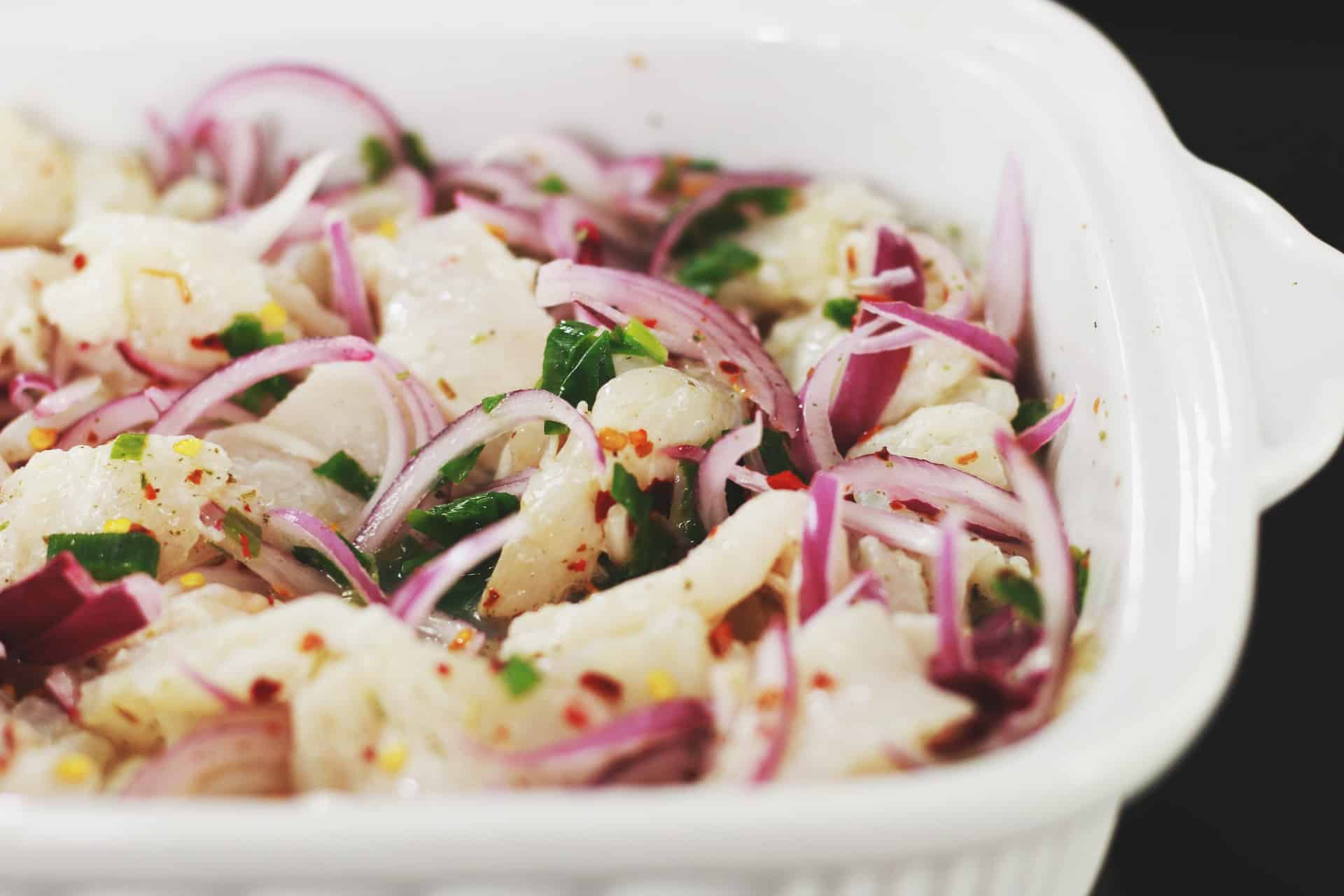Anyone who has visited Latin America knows that people throughout these lands pride themselves on an amazing dish made of marinated raw fish, seafood or even fruits. Though the spelling may vary among ceviche, seviche and cebiche, the various concoctions share a common past, leading us to wonder: what is ceviche anyway, and where did it come from?
In general, ceviche is basically raw seafood and/or vegetables marinated and “cooked” in citrus juice, served as an appetizer (boca or tapa) or as an entrée with other trimmings. The precise origin of this delicacy is unknown, since each Latin American country (and often regions within them) has many variations and ingredients, depending on what is available.
We do know, however, that ceviche originated on the South American Pacific coasts of Ecuador, Peru and Chile, with these shores close to what is perhaps the most abundant variety of seafood on the planet.
Ceviche also has a noble Incan past; modern historians have found evidence that the Incas ate raw fish accompanied by chicha (an alcoholic beverage made from corn) and usually corn in the cob and/or a tuber, such as potato or yuca (cassava).
It is believed that when the Spaniards arrived in the Pacific Incan empire, they fell in love with the exotic and abundant varieties of tropical fish and shellfish they found, but not with the way it was prepared. Furthermore, they despised chicha in comparison with the wines of their homeland and seemed to have a hard time digesting the local seafood.
Along with men and religion, the Conquistadors also brought the seeds of many different plants to “populate” the newfound lands. Seville oranges and lemons were among the many plants that were sown after the Spaniards’ arrival, and rapidly became the preferred accompaniment for the raw fish and seafood.
This evolved into marinades made with common ingredients from the region’s waters, including corvina, tuna, shrimp, black scallops and even fruits and vegetables such as beans or green bananas.
A classic Peruvian ceviche will usually be made of fish, lemon juice, cilantro and ají or rocoto hot peppers, served with corn or potato. When you are done eating, the cevichero will pour the leftover marinade in a glass and encourage you to drink the socalled “tiger milk.”
In other countries, different spices or herbs replace the heat of peppers with additions such as coconut milk or sweet spices. In Mexico, tomatoes and various citrus juices are used, and the ceviche is served with tortilla chips. In Ecuador and Honduras, handfuls of popcorn accompany the seafood treat.
As for Costa Rica, our prolific Pacific and Caribbean waters boast many species used for ceviche, from the traditional corvina and shrimp to chuchecas (black mussels) or octopus. At least one form of ceviche can be found at almost every beach bar or restaurant.
The Paseo de los Turistas in the central Pacific port city of Puntarenas is a good start for ceviche lovers. Among the tree-lined boulevards, tourists can find the largest selection of ceviche dishes in the country. In the Puntarenas heat, nothing cools you better than an ice-cold Imperial and a ceviche.
But why limit ourselves to seafood? In the Central Valley, green banana or plantain ceviches are served with grilled foods as a refreshing snack. New Costa Rican cuisine chefs make ceviche with many of the country’s exotic fruits, such as manzana de agua (water apple) or pejibaye (peach palm).
The recipe developed for this post is inspired by Costa Rica Ceviche and is an eclectic collage of flavors from Asia and Latin America, brought together to yield a combination of exotic tastes and common ingredients in a new and enticing way.
Thai Fruit Ceviche Served with Popcorn
Ingredients:
- 5 green bananas
- 1/2 small watermelon, cubed
- 1/2 cup coconut milk
- 1 tsp. red curry paste
- Juice of three lemons
- 1 tbsp. brown sugar
- 1 bunch fresh Thai basil, chopped
- 2 green onions, thinly sliced
- 1 tsp. soy sauce
- 1 bunch fresh cilantro, chopped
- 1 tbsp. sesame oil
- 3 cups freshly made popcorn, lightly salted
Preparation:
- In a bowl, combine all ingredients except popcorn, bananas and watermelon. Whisk together and let sit for at least 15 minutes.
- Wash the bananas. Trim ends with paring knife and discard.
- In a medium-sized pot, bring one quart of water to a boil. Add green bananas with plenty of salt and cook until tender, about 8-10 minutes.
- Cool bananas in ice water and peel immediately, then slice thinly at an angle.
- Add cubed watermelon and green bananas to the marinade and toss well.
- Allow ceviche to marinate for at least 30 minutes. Adjust flavor to taste and serve with popcorn on the side. Makes five servings.
Optional: Fish or seafood may be added, as long as it is cleaned and allowed to marinate for at least six hours. The flavor will be released better if left overnight in the refrigerator.
¡Buen provecho!
Author Marco González






